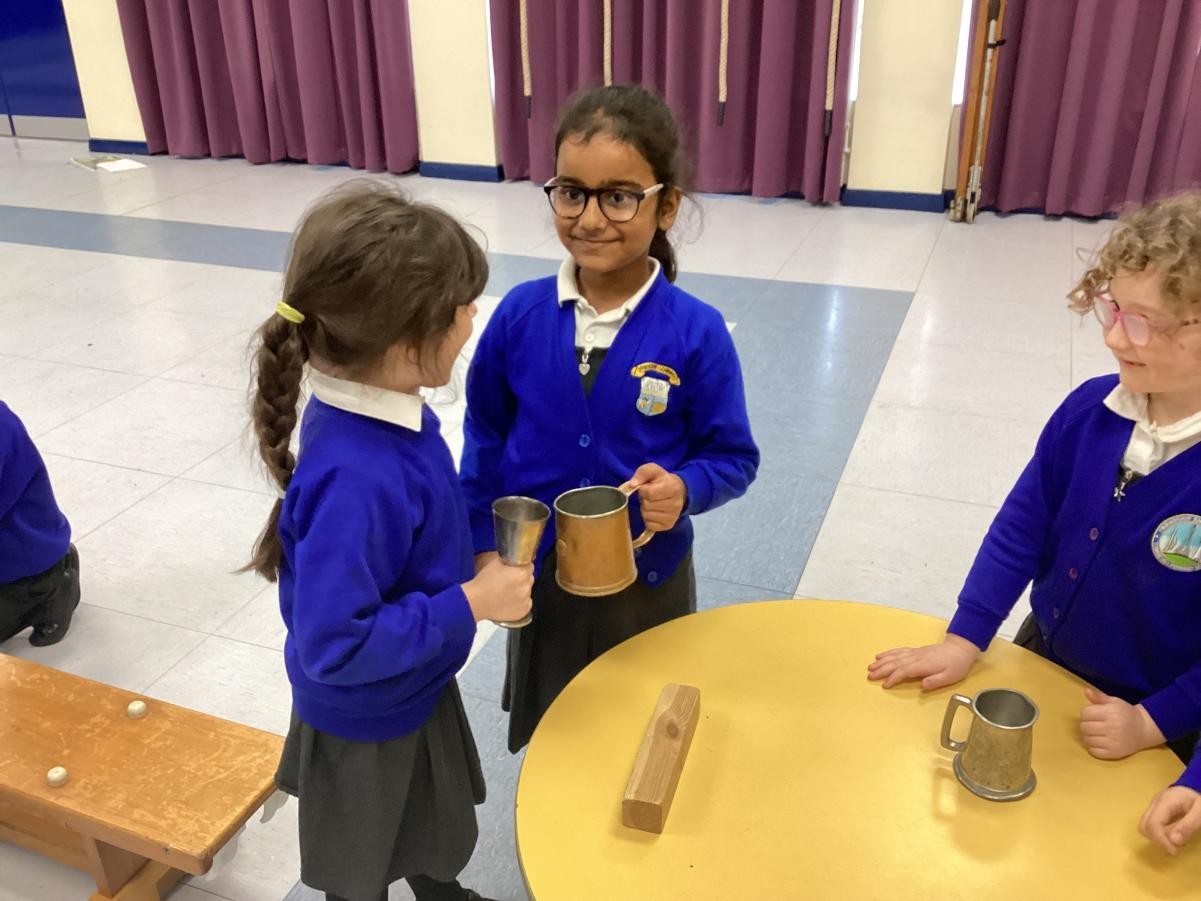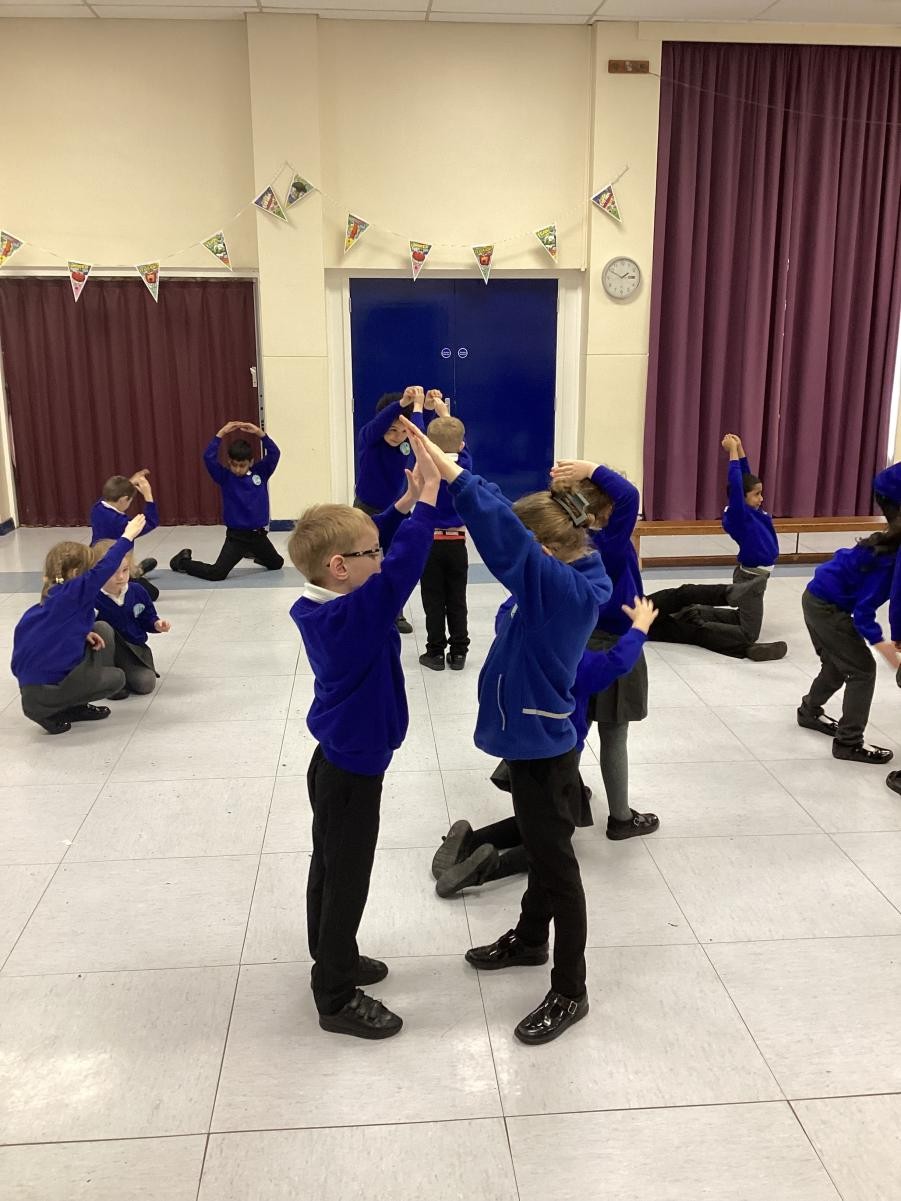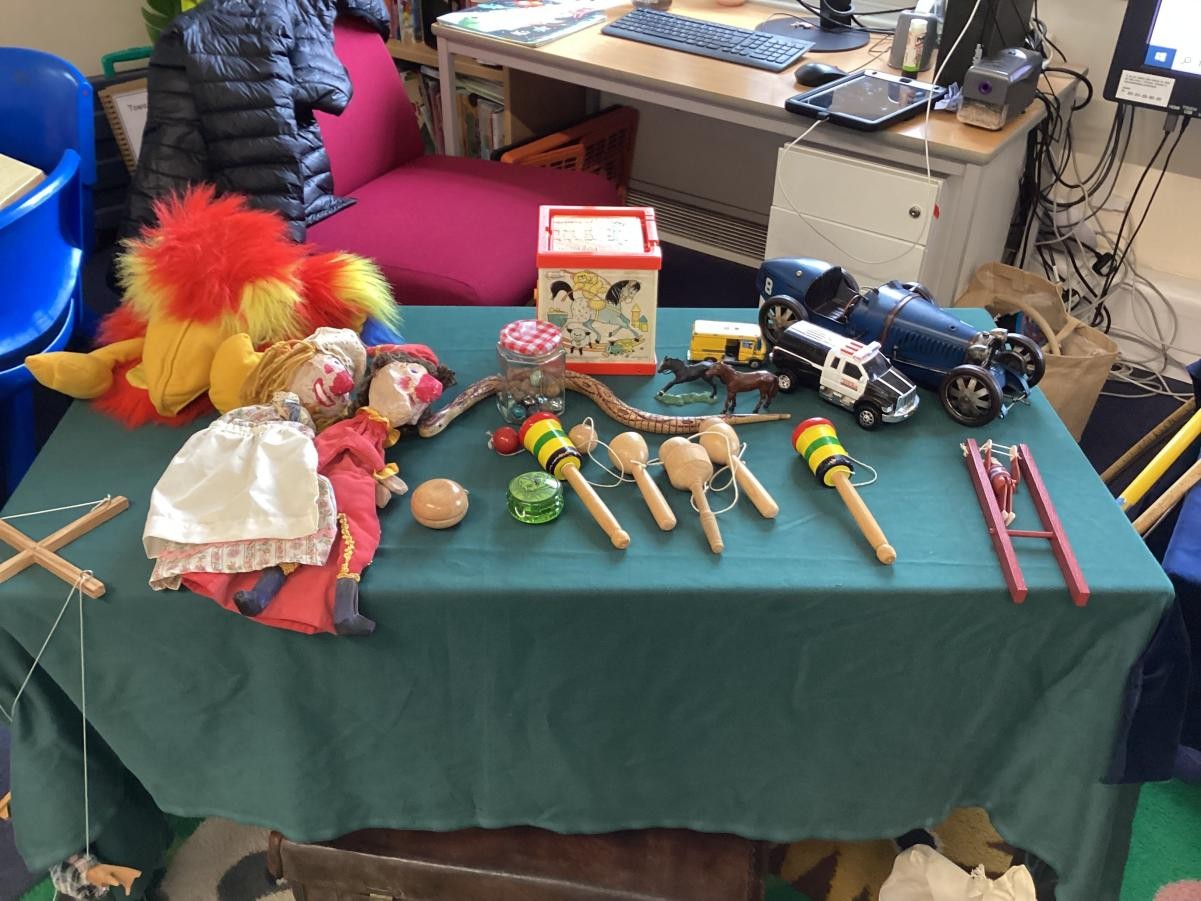History Rationale
Intent:
At Tower Hill Primary School our core vision is that ALL children, including disadvantaged children and those with SEND, will be informed and proactive future citizens with a clear understanding of how each one of their lives are connected to one another in the past, present and the future. The intent behind History at Tower Hill, is to design a curriculum where children learn to think critically and develop perspective, to understand the complexity of people’s lives in which they may meet in the future. We believe, by the time children leave Tower Hill, they should be equipped with a broad range of: skills, knowledge, understanding and empathy to make their own life choices by recognising what has happened before and the impact they will have with their own aspirational futures.
Implementation:
Tower Hill’s History Curriculum incorporates fundamental historical knowledge and skills, allowing pupils to build on these from year to year from Early Years through to KSII. Through the implementation of our History Curriculum, learning should be consolidated and built upon each year, ensuring continuity and progression across key stages and ensuring that the children leave each phase of their learning with the relevant skills and knowledge.
Early Years Foundation Stage:
The Early Learning Goal for ‘People and Communities’ States: Children talk about past and present events in their own lives and in the lives of family members. They know that other children don’t always enjoy the same things, and are sensitive to this. They know about similarities and differences between themselves and others, and among families, communities and traditions.
At Tower Hill the children start to learn some key skills in History in the EYFS. Through exploratory play they are encouraged to talk about themselves and their families, recognising differences. In our language rich environment, all children are given the opportunity to recall important events in their own lives such as Birthday celebrations, family events and special trips. Through modelling and questioning children are encouraged to use key vocabulary linked to talking about the passing of time. Through our topics of ‘All about me,’ ‘celebrations’ and ‘Dinosaurs,’ the children start to understand events that happened a long time ago and explore artefacts and resources that help us to learn more about these events.
Key Stage I:
The National Curriculum states that in KSI: Pupils should develop an awareness of the past, using common words and phrases relating to the passing of time. They should know where the people and events they study fit within a chronological framework and identify similarities and differences between ways of life in different periods. They should use a wide vocabulary of everyday historical terms. They should ask and answer questions, choosing and using parts of stories and other sources to show that they know and understand key features of events. They should understand some of the ways in which we find out about the past and identify different ways in which it is represented.
Through the ‘Guy Fawkes’ unit of study in Year 1, children are introduced to an event beyond their living memory that is significant to the history of the UK and begin to understand the cause and consequences of why Guy Fawkes acted as he did and the consequences of those actions, as well as exploring a significant individual in British history. They are also introduced to abstract historical terms such as ‘parliament’ and ‘treason’. As the children move throughout the year their understanding of significance is then extended through the study of ‘Man’s First Moon Landing’ whereby the children are encouraged to ask and answer questions such as ‘Who was Neil Armstrong and why was he important?’ whilst also looking at different sources to help their understanding. This is then further built upon in Year 2 during the study of the ‘Great Fire of London’ whereby the children, alongside recognising characteristic features during the period, are encouraged to discuss cause and consequence as well as interpreting different accounts of the past.
In their Spring unit of History, Year 1 children are also exposed to the concepts of ‘old and ‘new’, the passing of time – the difference between past and present, through their topic of ‘Toys’, building upon the language learnt within Early Years. In this unit of study the children are exposed to artefacts, teaching them how to handle and interpret evidence as well as developing their vocabulary. These skills are extended further in Year 2 in their Autumn unit of ‘Remembrance’ as children handle artefacts which allow children to understand the importance of Remembrance within modern British life, culture and heritage. Within this unit, the children also have the opportunity to study Edith Cavell’s life, exploring her story and sacrifice and comparing this with other significant nurses such as Florence Nightingale and Mary Seacole by gathering information from simple sources and using their enquiring skills. In Year 2 the children also study the change through time through the topic of ‘Seaside!’ looking specifically at the similarity and difference in seaside holidays from 100 years ago to now, beginning to think about change and continuity in preparation for Key Stage 2 and considering the different characteristic features from then to now.
Key Stage II:
The National Curriculum states that in KSII: Pupils should continue to develop a chronologically secure knowledge and understanding of British, local and world history, establishing clear narratives within and across the periods they study. They should note connections, contrasts and trends over time and develop the appropriate use of historical terms. They should regularly address and sometimes devise historically valid questions about change, cause, similarity and difference, and significance. They should construct informed responses that involve thoughtful selection and organisation of relevant historical information. They should understand how our knowledge of the past is constructed from a range of sources.
The curriculum in KS2 has been carefully selected and sequenced hoping to give children a solid foundation and broad overview in some of the most important periods, events and themes in British and World History. Throughout the Key Stage each of the 7 skills (Chronology, Cause and Consequence, Change and Continuity, Characteristic features and Historical Enquiry, Historical Significance and Historical Interpretation) are integrated within the planning and delivery of the curriculum. The curriculum gives children a strong grounding in British history, taught as much as possible, in chronological order to enable them to build a ‘big picture’ of History, building on from their learning in Early Years and KS1. This begins in Year 3 with their unit ‘Stone Age to Iron Age’ focusing on the characteristic Features of each period such as the tools, houses, weapons, clothing and settlements and understanding the changes and continuity across these periods of time and their significance as well as the continuities. This unit intends to have a strong emphasis on problem-solving and enables children to begin a timeline of History and build a sense of narrative ready for Year 4 and their unit of ‘Romans’. This unit is taught in Year 4 to ensure children are able to make strong links to previous learning and allows the children to understand the sense of ‘empire’. It enables children to become aware of the stages of growth, placing the invasions of Britain within this, focusing on why such an expansion was possible. Children also begin to understand legacy and how the Romans have influenced life up until today. Year 4’s curriculum is then followed by the ‘Anglo Saxons’ and ‘Vikings’ in the Spring and Summer term to continue the children’s understanding of chronology of British History. These topics are taught in succession of one another to enable the children to understand the interrelationship with one another. Firstly looking at the reason for the Saxon invasion comparing this to the Romans motive as well as looking at the characteristic features of the Saxon’s way of life including the coming of Christianity and how this is pivotal to society today. The Saxon unit provides children with the opportunity to look at interpretations of this significant period in British history, such as ‘How ‘Dark’ were the ‘Dark Ages’? The Vikings unit enables the children to continue building a chronological picture of Britain’s past as well as encouraging the children to think about how the past is represented, beginning to look at primary and secondary sources and their reliability.
Children’s historical knowledge of characteristic features of a period are further developed in the Year 5 unit of ‘Monstrous Monarchs. This unit focuses on developing the children’s skill of Cause and Consequence, looking at the short and long term effects of changing monarchs beyond 1066.
Throughout the Key Stage, Ancient Civilisations are covered three times. Year 3 study ‘Ancient Egypt’ Year 5 study ‘Mayans’ and Year 6 focus on ‘Ancient Greece’. Year 3 are introduced to the language of ancient and what this means with regards to the passing of time as well as civilisation. This can then be referred back to during their Spring topic of ‘Stone Age to Iron Age’ to stress that Britain was not such a developed civilisation. The ‘Ancient Egypt’ topic enables children to look at characteristic features of a period by making deductions and drawing conclusions from evidence, focusing on the attitudes, beliefs and ways of life, building a story of the distant past from 5,000 years ago. The unit starts with giving the children the opportunity to compare the Egyptian civilisation to the Shang Dynasty and Ancient Sumer to think about similarities and differences within their characteristic features. Year 5 focus on the Mayans in Spring Term looking at the cultural aspects of life and how this compares to Saxon Britain at the same time. This unit also enables children to compare this with the earlier ancient civilisation of Ancient Egypt progressing their understanding of characteristic features of a period. Ancient Greece is saved until Year 6 to enable children to understand the influence the Greeks had on the other societies they have studied previously to current day, consolidating the term legacy. This unit opens opportunities for children to discuss, debate and reason, enabling them to think about citizenship.
Local History is studied within Year 3’s unit ‘The History of Flight’ due to the rich history and strong links to aviation within Farnborough. This unit provides a link to the children’s previous learning in Year 1 during their Man’s First Moon Landing topic to compare Samuel Cody with Neil Armstrong and their achievements in aviation. It also allows children to see the influence Farnborough’s advances in aviation had in the Great War and in British history as well as appreciate a significant individual from their hometown.
History learning at Tower Hill does not end when the children leave the classroom however as we strongly believe in parental involvement and hope to inspire learning at home to extend knowledge learnt in the classroom but also encourage the skill of enquiry and allow children to take ownership of their own learning,. This is done through ‘Home Learning tasks’ for most topics from Y1 to Y6, developing the children’s creativity and continuing the engagement with their in-class learning.
We strongly believe that the children learn best when they are actively involved and with this in mind, all year groups participate in off-site visits for example: FAST museum, Natural History museum, Butser Farm, Hampton Court, Bletchley Park and Ufton Court as well as visitors/experiences in school.
Golden Threads:
The thread that links our history learning, from early years to year six, is the children’s chronological knowledge of the world. For some of our children, they will not get the opportunity to understand and explore the world further than their homes, therefore understanding how the world coexists and has in the past is key. We consistently weave this within our curriculum by the children referring to the timelines in each of their classrooms. This progresses throughout the year by adding new learning to their changing timeline, therefore, by the time the children are in year six they have a full functioning chronological knowledge which they can compare and reflect from. The development of their knowledge comes through having the use of physical artefacts, workshop experiences and trips to historical sites. On top of this, the children learn about significant people in their eras, and their importance at the time of how they shaped history, such as Samuel Cody’s importance in the history of flight and how we have a historical air field within walking distance. As well as this, by embedding the second thread, significance of individuals, we can build a perception of their importance within history and how history has been shaped, particularly in relation to the children. Finally, the third thread locality, is embedded throughout the history curriculum to ensure the children have a deep understanding of how history is surrounded all around them and how this affects the wider world. Thus children are able to expand their mind set in order to recognise that the world is a much bigger place with the past constantly altering their future and their lives.
Impact:
In History, we assess the impact of the curriculum on our learners in a number of ways. Firstly, we strive to ensure that our children’s attainment in this subject is in line with or exceeding Age Related Expectations using Tower Hill’s Progression Frameworks that are informed by the ARE statements provided by the Hampshire History Team. Our children should be ready for the next phase of their learning, ready to build on their Historical Skills and Knowledge. We also assess the impact of our teaching through the children’s ability to approach new learning and apply skills and knowledge to new situations. We encourage and promote independence and resilience in order that children can take control of their learning.


























